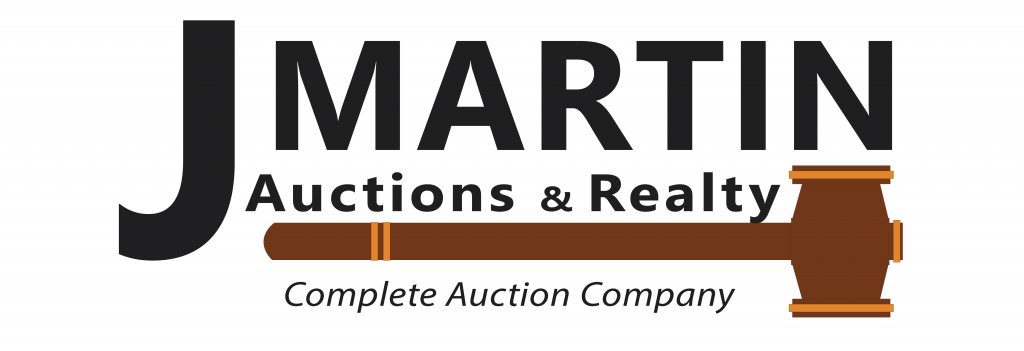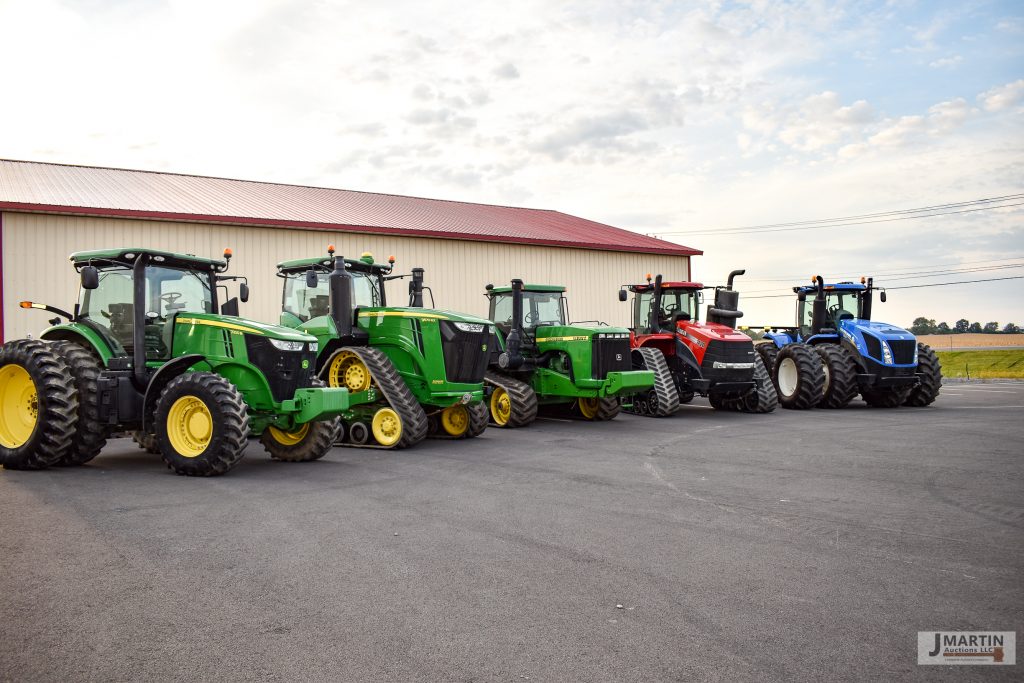Here is some key points when interested in buying a tractor at auction
- Body, Tires, & Overall Appearance
A tractor that looks well-maintained usually has been well-maintained. Peeling paint, dents or even weathered, cracked or bulging tires are signs that a tractor was stored outside and perhaps even abused. Depending on the type of tractor, replacing those tires could cost you up to $30,000. Before you make a decision, use a tire gauge to measure the tread depth left on the tires and compare to the tread depth measurement on the tire manufacturer’s website to get a good idea of how much life is left in the tires. - Articulation Point
Conduct both a visual and operational inspection of the articulation point. As the major moving part on the tractor, it should always be greased. Check for any metal shards. Shards are signs of wear and most likely a result of improper maintenance.
For the operational inspection, start up the tractor and drive it back and forth. If you feel a knock when moving, a transmission slip could be the culprit. Next, turn the steering left and then right. Check for any wandering or looseness in the steering as this could mean that the main pin may be bent or damaged and needs to be replaced. Tight or difficult steering could signify that the pins need to be greased or that the hydraulic cylinders might not be in proper working order. - Engine Compartment
As with all pieces of equipment, start the tractor up, lift the hood, let it run and check for any signs of leaks from the engine, hoses or hydraulics. Check for any cracked or worn hydraulic, coolant or fuel lines. Find the engine plate and check for the amount of horsepower and make sure that the engine meets emission standards for your jurisdiction.
Use a mechanic’s stethoscope, though we’ve seen some buyers use a screwdriver, and hold it up to the engine block. Listen for any knocking or scratching sounds coming from the engine cylinders.
When the machine is off, remove the air filter. Air filters should be replaced every 100-200 hours, 300-400 hours for in cab filters. Check the operator’s manual for the manufacturer’s recommendation. If regularly replaced, the air filter should not appear dirty. - Cab
Open the door of the cab and take a look inside. Dirt and mud inside the cab could be signs of improper maintenance. Step inside the cab and check how many hours of operation the tractor has performed. Remember: some tractors may have up to 4,000-5,000 operating hours but may still be in very good shape because they have been taken care of properly. If the cab includes a guidance system, check that all displays, receivers and other electronic components are in working order. Guidance systems can be costly to replace or repair. - PTO
Anything that has a mechanical drive -grain carts, manure spreaders, augers, etc. -will require a functioning PTO shaft. First and foremost, ensure that the PTO has the proper specification for the attachments you will need to run, for example, 540, 720, 1000 or Big1000 RPM. It is better to buy a tractor that has more of what you need when it comes to horsepower, PTO power specification, etc. The end result will be better fuel economy in the field and the potential to handle any large jobs that could come up as your operation expands or changes.
Start up the tractor, turn on the PTO and check for a smooth rotating movement. Listen for any odd noises, such as a knocking sound, coming from the running output shaft. Keep in mind that repairs to the PTO can be costly as the tractor’s rear end, and usually the rear axle as well, needs to be removed for access. - Hyd Power
Look for leaks and poor seals when inspecting hydraulics, possible signs that damage to the outlets or hydraulic tank may exist. Consider what types of attachments you will be running when inspecting the hydraulic outlets and auxiliary/return lines. For example, most air drills now need a minimum of three hydraulic outlets and one auxiliary line with 38 GPM of hydraulic power, but some may need up to five hydraulic outlets and three auxiliary lines with 98 GPM of hydraulic power. Ensure the tractor has the proper number of outlets and lines for what you need to run now and a year from now. - Maintenance Log
We encourage sellers to supply maintenance logs, inspection lists, work orders and other supporting documents. Make sure to ask at the auction site for these documents. They provide valuable insight into how often and what types repairs were performed.
If you would like to know for what specific farm applications the tractor was used, the auction site can sometimes, with the seller’s permission, provide you with the seller’s contact information.
Make informed decisions on the tractors you buy at our auctions!


